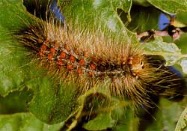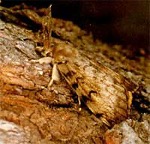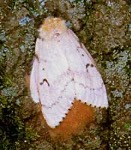Gypsy Moth Treatment Proposed for 2021
go.ncsu.edu/readext?771580
en Español / em Português
El inglés es el idioma de control de esta página. En la medida en que haya algún conflicto entre la traducción al inglés y la traducción, el inglés prevalece.
Al hacer clic en el enlace de traducción se activa un servicio de traducción gratuito para convertir la página al español. Al igual que con cualquier traducción por Internet, la conversión no es sensible al contexto y puede que no traduzca el texto en su significado original. NC State Extension no garantiza la exactitud del texto traducido. Por favor, tenga en cuenta que algunas aplicaciones y/o servicios pueden no funcionar como se espera cuando se traducen.
Português
Inglês é o idioma de controle desta página. Na medida que haja algum conflito entre o texto original em Inglês e a tradução, o Inglês prevalece.
Ao clicar no link de tradução, um serviço gratuito de tradução será ativado para converter a página para o Português. Como em qualquer tradução pela internet, a conversão não é sensivel ao contexto e pode não ocorrer a tradução para o significado orginal. O serviço de Extensão da Carolina do Norte (NC State Extension) não garante a exatidão do texto traduzido. Por favor, observe que algumas funções ou serviços podem não funcionar como esperado após a tradução.
English
English is the controlling language of this page. To the extent there is any conflict between the English text and the translation, English controls.
Clicking on the translation link activates a free translation service to convert the page to Spanish. As with any Internet translation, the conversion is not context-sensitive and may not translate the text to its original meaning. NC State Extension does not guarantee the accuracy of the translated text. Please note that some applications and/or services may not function as expected when translated.
Collapse ▲For several years now, the gypsy moth has been monitored by the N.C. Department of Agriculture and Consumer Services because of the possible damage to our forest and shade trees. The adult female lays an egg mass that includes hundreds of eggs. These egg masses are attached to trees, buildings, campers, trailers, yard furniture, or anything that is within crawling distance. Eggs survive the rest of the summer, fall, and winter.
In Surry County, eggs usually begin to hatch in May. As the young caterpillars grow, they eat more and will cause damage on numerous trees such as alder, apple, aspen, basswood, birch, boxelder, mountain ash, all types of oaks, and sweet gum. They not only cause damage to these trees but can pose public health concerns for people with respiratory problems. Their hairs and droppings may cause allergic reactions. The caterpillars will pupate and emerge as adults in July and September. The older gypsy moths feed on beech, blueberry, chestnut, hemlock, locust, maple, pine, and spruce. Their continuous feeding causes defoliation over time and has the potential of killing these trees.
The North Carolina Department of Agriculture and Consumer Services (NCDA&CS) has been monitoring the gypsy moth population throughout Surry County, along with other counties, to determine damage caused and need for control measures. After careful monitoring, this year, NCDA&CS is proposing to provide control treatment in Lambsburg area. This 2,080-acre proposed is in Surry County. Bryant Road goes through the middle, and I-77 runs along the eastern edge of this block. In 2019, one male moth was detected in this block. in 2020, that number increased to twenty-five, signifying that a reproducing population is present. One application of mating disruption is proposed for this block in late May or early June.
Due to the current COVID-19 situation, the standard in-person public meetings will not be held. However, they do have a treatment information site that can be viewed. This website has a video with information about the gypsy moth and treatment options, a lookup tool to search specific addresses to confirm treatment status, a summary of proposed treatment block descriptions, a section to submit public comments, and a link to request a treatment notification to be sent to you by email or text.
Residents will need the name of the proposed treatment block (found in block descriptions) in order to submit comments or request notification. Comments must be submitted by February 26, 2021. All homeowners that live within or around each treatment block will have already received this information via mail.
Options for dealing with gypsy moth infestations include aerial spraying of a gypsy moth mating disruptor or a naturally occurring bacteria. All proposed treatments in 2021 will use organic products. Trapping grids will be used to evaluate the effectiveness of these treatments.







